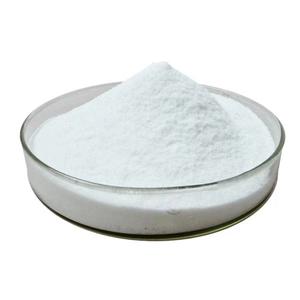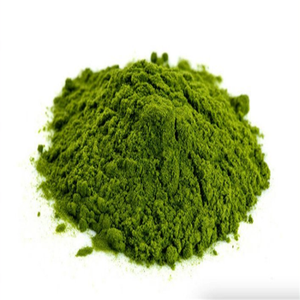Intro to Potassium Silicate Powder
Potassium silicate powder, a carefully ground form of the inorganic compound K ₂ O · nSiO ₂, is acquiring enhancing attention for its multifunctional homes and comprehensive commercial applications. Recognized for its high thermal security, outstanding binding abilities, and chemical resistance, this product acts as a crucial component in fields such as building and construction, agriculture, foundry work, surface area treatment, and environmental removal. As markets continue to seek lasting and high-performance materials, potassium silicate powder becomes a flexible option with developing possibility.
Chemical Composition and Distinct Characteristics
Potassium silicate powder consists of potassium oxide and silicon dioxide in differing proportions, typically revealed as K ₂ O · nSiO two, where the “n” value defines the molar ratio and substantially affects the physical and chemical habits of the material. This powder exhibits low solubility at ambient conditions however ends up being responsive under warm or alkaline atmospheres, making it perfect for controlled-release applications. Its capability to create strong molecular bonds with substratums offers it excellent sticky and sealing residential properties, while its non-flammable nature improves safety in high-temperature procedures. In addition, potassium silicate powder resists deterioration and microbial strike, adding to long-lasting durability in practical applications.
Manufacturing Processes and Technological Advancements
The production of potassium silicate powder entails either completely dry or damp synthesis methods, each offering distinctive advantages depending on application requirements. In the completely dry process, basic materials such as potassium carbonate and silica sand are melted in a high-temperature furnace, after that cooled down and squashed right into great powder. This method appropriates for large commercial manufacturing however calls for substantial power input. On the other hand, the damp procedure entails reacting potassium hydroxide with amorphous silica under controlled conditions, complied with by dissipation and drying out to generate powdered kinds. Recent developments consist of ultrasonic-assisted synthesis, microwave calcination, and nanostructuring methods that improve reaction effectiveness, minimize processing time, and enhance item efficiency. These advancements not just enhance practical buildings however also line up with global fads toward greener manufacturing practices.
Applications in Farming and Environmental Management
In farming, potassium silicate powder plays a critical function as a dirt conditioner and plant nutrient booster. It supplies bioavailable silicon and potassium– both important elements that enhance plant cell wall surfaces, improve drought resistance, and improve illness and insect resistance. Its use in rice, wheat, and sugarcane cultivation has shown increased returns and reduced dependency on synthetic chemicals. Beyond agriculture, potassium silicate powder contributes to environmental protection initiatives by debilitating heavy metals in infected soils and functioning as an adsorbent in wastewater therapy. Its ion-exchange capability allows efficient removal of toxins like lead, cadmium, and arsenic, sustaining sustainable land and water repair efforts.
Usage in Building and Commercial Applications
The construction sector leverages potassium silicate powder for its cementitious and sealing properties. It is made use of in concrete admixtures to densify surface areas, improve compressive strength, and lower leaks in the structure. In finishes and sealers, it offers fireproof and waterproof layers, enhancing structure long life and safety. The foundry market take advantage of its usage in mold binders, where it enhances the refractoriness and dimensional stability of sand mold and mildews. Moreover, in surface area treatment innovations, potassium silicate powder acts as a key ingredient in anti-corrosion finishings for metal substrates and in ceramic lusters to enhance gloss and attachment. These diverse applications underline its value in commercial modernization and infrastructure development.
Arising Duties in Advanced Technologies
Current advancements have expanded the range of potassium silicate powder right into advanced technological domains. Researchers are discovering its combination into wise materials, including self-healing concrete and responsive finishings that adjust to ecological adjustments. In nanotechnology, potassium silicate nanoparticles are being examined for their improved reactivity and functionalization abilities, opening up brand-new possibilities in catalysis, sensor growth, and biomedical applications. In addition, continuous researches recommend possible usages in green composites and eco-friendly product packaging systems, where its all-natural origin and low poisoning deal eco-friendly advantages. These emerging roles illustrate the substance’s flexibility and its growing importance in future-oriented product scientific research.
Challenges and Sustainability Considerations
Despite its many benefits, the extensive use of potassium silicate powder encounters obstacles related to production expenses, scalability, and ecological effect. Energy-intensive manufacturing procedures add to carbon discharges, triggering research right into renewable energy-powered synthesis and waste-derived silica resources. Furthermore, there is a requirement for standardized security methods to make sure correct handling and lessen work exposure. Continuous life-cycle assessments aim to measure its eco-friendly footprint and guide lasting sourcing approaches. Addressing these concerns is important for preserving the material’s feasibility in a resource-constrained world.
Future Potential Customers and Industry Overview
Looking in advance, the demand for potassium silicate powder is expected to grow, driven by increasing applications in green building and construction, accuracy farming, and progressed production. Innovations in solution and handling will certainly additionally improve its functionality and widen its market reach. Joint efforts in between academia, industry, and governing bodies will certainly be instrumental in advertising responsible production and usage standards. Incorporating digital innovations such as AI-driven procedure optimization and IoT-enabled monitoring can unlock brand-new performances in its handling and deployment. As sustainability stays a central style in worldwide growth, potassium silicate powder stands poised to play an essential function in shaping a cleaner, smarter, and a lot more resistant industrial landscape.
End of Record
This article supplies a thorough yet focused expedition of potassium silicate powder, highlighting its clinical structure, practical applications, and future trajectory. Structured for quality and depth, it shows the existing state of understanding while highlighting the technology driving its continued importance in modern-day product scientific research.
TRUNNANO is a supplier of boron nitride with over 12 years of experience in nano-building energy conservation and nanotechnology development. It accepts payment via Credit Card, T/T, West Union and Paypal. Trunnano will ship the goods to customers overseas through FedEx, DHL, by air, or by sea. If you want to know more about potassium silicate, please feel free to contact us and send an inquiry(sales5@nanotrun.com).
Tags: potassium silicate,k silicate,potassium silicate fertilizer
All articles and pictures are from the Internet. If there are any copyright issues, please contact us in time to delete.
Inquiry us


